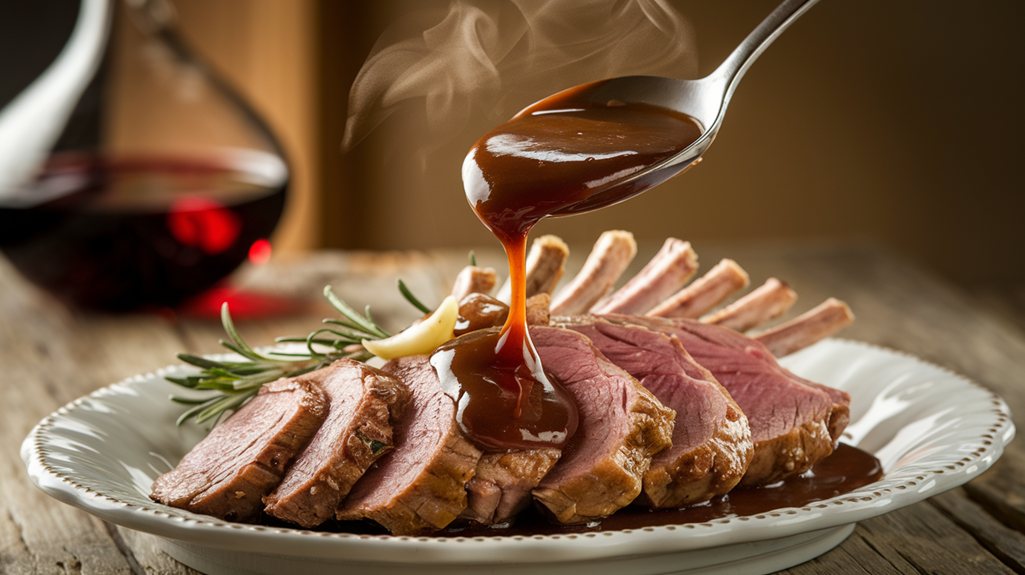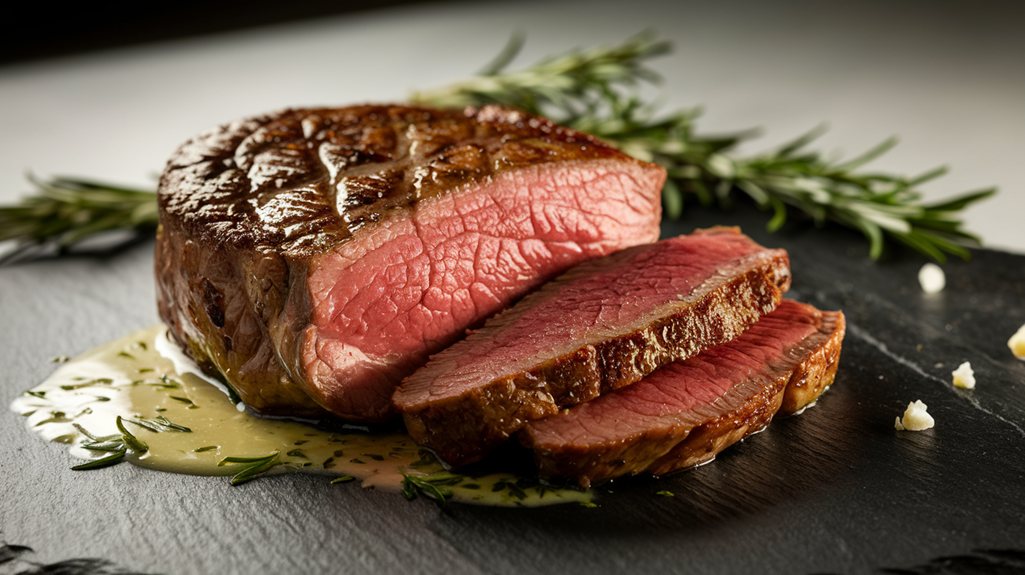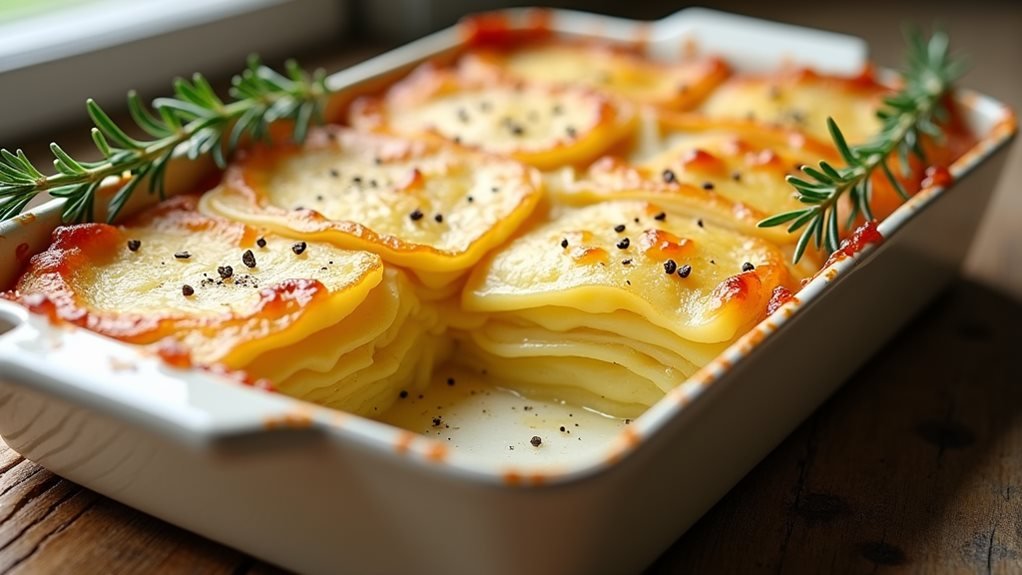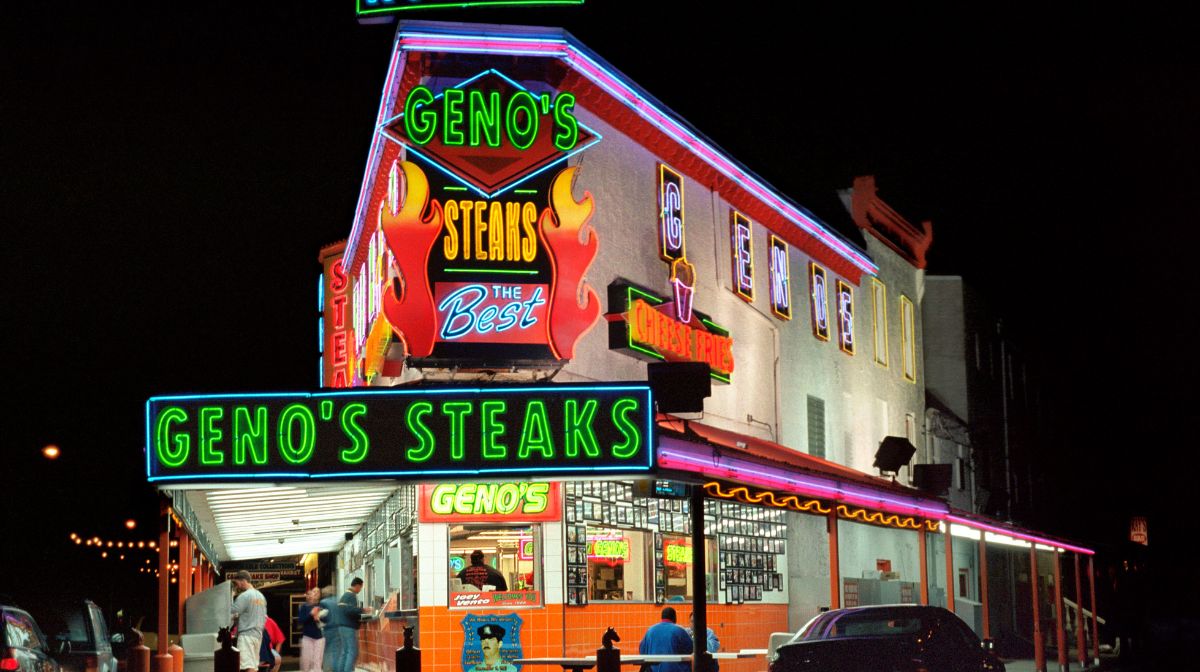You might wonder if Gordon Ramsay's lamb sauce truly lives up to its legendary status in professional kitchens worldwide. After spending decades perfecting his technique in French and European restaurants, Ramsay's signature sauce combines rich pan drippings, precise temperature control, and layered aromatics that transform a basic roast into a masterpiece. Understanding the core elements of this sauce will let you access restaurant-quality results in your own kitchen.
French Culinary Inspiration 1990S
While Gordon Ramsay's lamb sauce gained widespread fame in recent years, its roots trace back to his formative years studying French cuisine in the 1990s.
During his time in Paris, you'll find he learned the art of rich sauces under legendary chefs who emphasized the significance of pan drippings and proper reduction techniques.
You'll appreciate how Ramsay's experience with savory lamb sauces evolved from classic French preparations.
His lamb recipes reflect this training, combining traditional methods with his signature intensity.
When you're recreating gordon ramsay lamb recipes at home, you're tapping into decades of culinary expertise that began in those French kitchens.
Just as his acclaimed Beef Wellington requires precise timing and technique, his lamb sauce demands careful attention to detail.
The careful balance of wine and stock, along with the vital deglazing step, comes directly from his classical training.
His mastery of sauce-making perfectly complements his renowned herb-crusted lamb chops that showcase premium cuts and vibrant flavors.
His techniques often incorporate fresh rosemary and other aromatic herbs to enhance the natural flavors of the meat.
International Restaurant Training
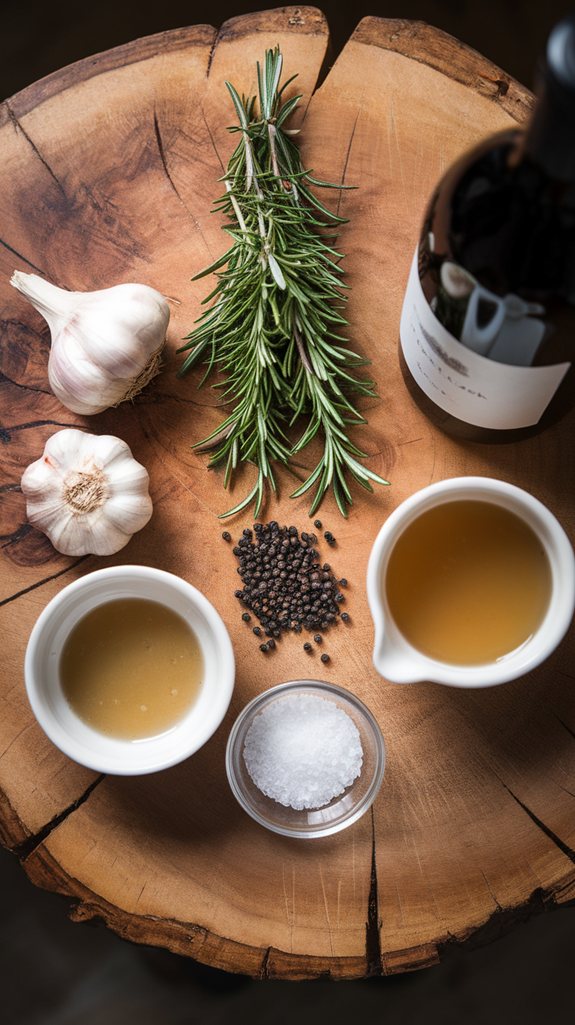
Gordon Ramsay's lamb sauce has become iconic in professional kitchens worldwide, particularly in international restaurant training programs where it serves as a benchmark for mastering classical sauce preparation. This rich, wine-based sauce exemplifies the importance of proper deglazing techniques and reduction methods that are fundamental to high-end restaurant cooking. Using high heat sautéing techniques similar to his Asian-inspired dishes, chefs can develop complex flavors in the sauce base.
The sauce's preparation is often used to teach new chefs the critical skills of developing depth of flavor, managing heat control, and achieving the perfect consistency. In professional kitchen training, special attention is paid to the timing of adding ingredients and the importance of properly incorporating the fond (browned bits) from the roasted lamb into the sauce. Similar to his approach with buttermilk marination process, the attention to detail in sauce preparation ensures optimal flavor and quality.
Ingredients:
- 2 cups dry red wine
- 2 cups chicken stock
- 2 tablespoons lamb drippings
- 1 teaspoon sea salt
- 1/2 teaspoon black pepper
- 2 sprigs fresh rosemary
- 2 cloves garlic, crushed
After removing the roasted lamb from the pan, place the roasting pan over medium-high heat and add the red wine, scraping vigorously to release the fond. Add the chicken stock, crushed garlic, and rosemary, then reduce heat to medium and simmer for approximately 10 minutes, stirring occasionally, until the sauce has reduced by half and achieved a silky consistency.
Strain through a fine-mesh sieve and season with salt and pepper to taste. For ideal results, use a heavy-bottomed roasting pan that can withstand direct heat, and avoid non-stick surfaces as they won't develop proper fond.
The key to professional-quality sauce lies in the reduction process – watch for the sauce to coat the back of a spoon and leave a clear line when you run your finger through it. Never rush the reduction by increasing the heat, as this can result in a bitter taste and compromised texture.
Regional European Adaptations
Throughout Europe, countless regional variations of Ramsay's classic lamb sauce have emerged, each reflecting local ingredients and culinary traditions.
You'll find French versions that incorporate Bordeaux wine and fresh herbs, while Italian adaptations often feature rich garlic notes and local reds from Tuscany.
In Spain, you'll find meat sauces enriched with Rioja wine and smoked paprika.
If you're interested in trying these regional takes, you can adapt your rich lamb sauce recipe by using wines from specific regions.
For example, pair a bold Châteauneuf-du-Pape with Provençal herbs, or choose a Chianti with extra garlic and rosemary for an Italian twist.
Each variation brings its own character while maintaining the sauce's crucial savory depth.
Seasoning Master Class Guidelines
Building on these regional interpretations, mastering the art of seasoning your lamb sauce requires understanding the core principles of flavor balance.
When making savory sauces, you'll want to start with a foundation of salt, adding it gradually while tasting throughout the reduction process.
For rich meat sauces like this lamb sauce, you'll find that fresh rosemary plays a vital role. Add 2-3 sprigs during the reduction phase, removing them before serving.
You'll know you've achieved the right balance when you can taste distinct layers of flavor – initially the wine, then the meat essence, and ultimately the herbs.
Test your sauce by coating the back of a spoon; it should leave a clean line when you run your finger through it.
Food Storage Best Practices
While proper storage techniques are essential for any sauce, lamb sauce requires particular attention due to its rich meat-based ingredients.
When you're storing your holiday sauces and meat gravies, always let them cool completely before transferring to airtight containers. For lamb recipes that yield extra sauce, you'll want to portion it into smaller containers to make reheating easier.
In the refrigerator, your lamb sauce will stay fresh for 4-5 days. If you're planning to keep it longer, freeze it in freezer-safe containers for up to 3 months.
When you're ready to use it again, thaw frozen sauce overnight in the refrigerator. Before cooking with stored sauce, always check for any off-odors and give it a quick stir to recombine any separated ingredients.
Professional Plating Suggestions
To serve your lamb sauce like a professional chef, you'll want to focus on both presentation and functionality.
Start by warming your serving plate, then create a gentle swoosh of the Gordon Ramsay lamb sauce recipe across one side using the back of a spoon. Place your sliced lamb in the center, slightly overlapping the sauce.
For an elegant finish, add a pat of melted butter on top of the meat sauce for lamb, allowing it to slowly drizzle down.
Garnish with fresh thyme springs arranged delicately around the plate's rim. If you're serving family-style, pour the sauce into a warm gravy boat, placing fresh herbs alongside for guests to add as desired.
Remember to wipe any drips from the plate's edges before serving for that professional restaurant appearance.
